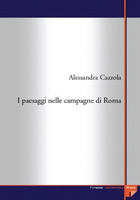I paesaggi nelle campagne di Roma
| dc.contributor.author | Alessandra, Cazzola | |
| dc.date.accessioned | 2010-09-02 00:00:00 | |
| dc.date.accessioned | 2020-04-01T15:27:53Z | |
| dc.date.available | 2020-04-01T15:27:53Z | |
| dc.date.issued | 2005 | |
| dc.identifier | 351985 | |
| dc.identifier | OCN: 808384668 | en_US |
| dc.identifier.uri | http://library.oapen.org/handle/20.500.12657/34844 | |
| dc.description.abstract | This book presents the results of research carried out by the author over the three years of the PhD in Landscape Design at Florence University. The first part of the work focuses on the theoretical and methodological aspects of the study of the agricultural landscape and the description of its component elements, the process of its formation and the evolution of its structure. The second part represents a practical application of these observations, with an original elaboration of the relations that have given rise to the various types of agricultural landscape into which the Roman countryside can be broken down. In short, the scope of the research is to set into relation a cognitive model of the agrarian landscape with a specific territorial framework rich in emblematic landscape situations, setting itself the objective of testing the feasibility of the application of individual interpretations and proposals, and of reappraising the role of the agrarian landscape within the current process of environmental and landscape redevelopment. | |
| dc.language | Italian | |
| dc.relation.ispartofseries | Scuole di dottorato | |
| dc.subject.classification | thema EDItEUR::A The Arts::AM Architecture::AMV Landscape architecture and design | en_US |
| dc.subject.other | urbanistica | |
| dc.subject.other | rome | |
| dc.subject.other | town planning | |
| dc.subject.other | roma | |
| dc.subject.other | landscape | |
| dc.subject.other | paesaggio | |
| dc.title | I paesaggi nelle campagne di Roma | |
| dc.type | book | |
| oapen.abstract.otherlanguage | Il volume presenta i risultati della ricerca condotta dall'autrice durante i tre anni del Dottorato in "Progettazione Paesistica" di Firenze. La prima parte del lavoro è incentrata sugli aspetti teorici e metodologici dello studio del paesaggio agrario e sulla descrizione dei suoi elementi componenti, dei suoi processi formativi, dell'evoluzione della sua struttura. La seconda parte è un'applicazione pratica di quanto rilevato, con un'elaborazione originale delle relazioni che danno origine alle diverse tipologie di paesaggi agrari secondo le quali è oggi possibile articolare la campagna romana. In sintesi la ricerca ha voluto mettere in relazione un modello conoscitivo riferito al paesaggio agrario con un quadro territoriale specifi co ricco di situazioni paesistiche emblematiche, ponendosi l'obiettivo di saggiare la fattibilità dell'applicazione delle chiavi di lettura individuate e proposte, e di rivalutare il ruolo del paesaggio agrario all'interno dell'attuale processo di riqualifi cazione ambientale e paesistica. | |
| oapen.identifier.doi | 10.26530/OAPEN_351985 | |
| oapen.relation.isPublishedBy | bf65d21a-78e5-4ba2-983a-dbfa90962870 | |
| oapen.relation.isbn | 8884533996 | |
| oapen.identifier.ocn | 808384668 |

